
By the time we recorded the version, It was road-tested classic that we were shure was going to be our next hit, even bigger than
"Smokin'," It almost was, it should have been, and when it didn't happen, it took all the fight out of the band, just like air escaping from a
punctured tire. We stumbled through one last album after that, but our hearts weren't in it anymore. But all in all, we didn't have any
regrets; for a bunch of middle-class kids from the Midwest, we did all right. We knew we left something behind that was good, that would
stand on it's own, and also influence some folks down the road. Just ask Motley Crue.
"Smokin'," It almost was, it should have been, and when it didn't happen, it took all the fight out of the band, just like air escaping from a
punctured tire. We stumbled through one last album after that, but our hearts weren't in it anymore. But all in all, we didn't have any
regrets; for a bunch of middle-class kids from the Midwest, we did all right. We knew we left something behind that was good, that would
stand on it's own, and also influence some folks down the road. Just ask Motley Crue.


| Biography |

Some of the major acts that graced the stages of America with Brownsville Station






Cub Koda
Michael lutz
T.J. Cronley
Tony Driggins
Henry Weck
Bruce Nazarian
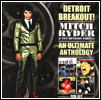
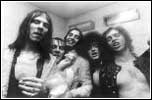
| Mitch Ryder |
| MC5 |


As for me, I had been recording and playing in bands since 1963,originally with
high-school buddies The Del-Tinos, and later out in Las Vegas under the wings
of Ronnie Ross, the guy who really taught me how to work a crowd into a frenzy.
high-school buddies The Del-Tinos, and later out in Las Vegas under the wings
of Ronnie Ross, the guy who really taught me how to work a crowd into a frenzy.
Ronnie Ross
Del-Tino's
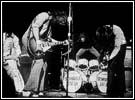
| Brownsville Station 1969 |
When this 45 died a quiet death, we were dropped from the label and went back to the only avenue open to us in our quest for fame and
the solid gold Cadillac: the road. We played every gig that came our way, from the hippie ballrooms that dotted the landscape to every
"pop festival" that offered us a gasoline-powered generator and a stage to stomp around on.
the solid gold Cadillac: the road. We played every gig that came our way, from the hippie ballrooms that dotted the landscape to every
"pop festival" that offered us a gasoline-powered generator and a stage to stomp around on.
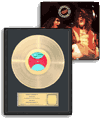
The next single, "Smokin' in the boy's Room", was the one that put us on the map. It started out as an album cut,
getting major FM radio play up in Portland, Maine. Doug pressed a couple of thousand singles to capitalize on it,
and within a week they were all sold out. It eventually sold 2.5 million 45s, got us on every rock TV show that was
happening back then, and generally turned our world upside down. After storming the gates for five years, someone
finally let us in.
"Barefooting" was the flipside of "Smokin," it features one of Michael's best vocals and a guitar intro that Link Wray
liked enough to use on one of his later albums.
getting major FM radio play up in Portland, Maine. Doug pressed a couple of thousand singles to capitalize on it,
and within a week they were all sold out. It eventually sold 2.5 million 45s, got us on every rock TV show that was
happening back then, and generally turned our world upside down. After storming the gates for five years, someone
finally let us in.
"Barefooting" was the flipside of "Smokin," it features one of Michael's best vocals and a guitar intro that Link Wray
liked enough to use on one of his later albums.

| Bruce Nazarian |
-Cub Koda
Cub Koda died of kidney failure at the age of 51 in 2000.
We opened for everybody and everybody opened for us, both famous and forgettable,
and believe me, it was never dull. At the end of 1973, we figured that we had spent five
months of that year onstage, and the other seven in a vehicle driving someplace.
and believe me, it was never dull. At the end of 1973, we figured that we had spent five
months of that year onstage, and the other seven in a vehicle driving someplace.
"Do The Bosco" was our third single and the second to be pulled from our debut album. The title came from T.J. Cronley, who would
challenge the band members to compose songs around lunatic suggestions like "Toboggan Au Gratin," "1949 Zoot Suit,"and "I Love
You Baby,Swing It Loud." The lyrics tip the hat to several of our heroes, from Soupy Sales to the Kingsmen, and the song was another
decent-sized local hit. By this time, our first album had been pick up for national consumption by Warner Bros. We were perceived by the
company's bigwigs as being not all that different from Sha Na Na, which of couse, wasn't the way we say it at all. To say
that we were lost in the shuffle would be putting it mildly. So we started working on our next album, trying to distance our
selves from ourhopped-up-oldies band image. The only tracks that ended up seeing the commercial light of day became
our last Warner Bros. single. "That's Fine" was one part roadhouse stomp, one part Sam & Dave shouting match, with
Lutz and I sharing the vocals, while "Tell me All About it"recounts the woes of a your-name-here groupie, with Bob Seger
harmonizing with me on the last verse.
challenge the band members to compose songs around lunatic suggestions like "Toboggan Au Gratin," "1949 Zoot Suit,"and "I Love
You Baby,Swing It Loud." The lyrics tip the hat to several of our heroes, from Soupy Sales to the Kingsmen, and the song was another
decent-sized local hit. By this time, our first album had been pick up for national consumption by Warner Bros. We were perceived by the
company's bigwigs as being not all that different from Sha Na Na, which of couse, wasn't the way we say it at all. To say
that we were lost in the shuffle would be putting it mildly. So we started working on our next album, trying to distance our
selves from ourhopped-up-oldies band image. The only tracks that ended up seeing the commercial light of day became
our last Warner Bros. single. "That's Fine" was one part roadhouse stomp, one part Sam & Dave shouting match, with
Lutz and I sharing the vocals, while "Tell me All About it"recounts the woes of a your-name-here groupie, with Bob Seger
harmonizing with me on the last verse.
Dr. John , The Stooges, Grand Funk Railroad , Muddy Waters, John Lee Hooker, B.B. King, Bo Diddley, John Mayall ,Mitch
Ryder & The Detroit Wheels , Joe Cocker , Bob Seger, Mott The Hoople, Ten Years After , Jethro Tull , John Sebastian,
Billy Joel, Badfinger, Faces, J. Geils Band, Poco, Black oak Arkansas, Peter Frampton, Uriah Heep, Blackfoot , Reo
Speedwagon, Van Halen, Slade, Blue Oyster Cult and more...........
Ryder & The Detroit Wheels , Joe Cocker , Bob Seger, Mott The Hoople, Ten Years After , Jethro Tull , John Sebastian,
Billy Joel, Badfinger, Faces, J. Geils Band, Poco, Black oak Arkansas, Peter Frampton, Uriah Heep, Blackfoot , Reo
Speedwagon, Van Halen, Slade, Blue Oyster Cult and more...........
| Author Stephen King has called Koda "the King of the Houserockers." |

| Bob Seger |
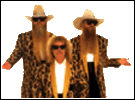

| ZZ Top |
| Springsteen |

| Henry Weck |
We had long hair and wore all types of outrageous; spangly oufits, complete with platform shoes. We played through banks of
Marshall stacks at deafening volume. We engaged in all manner of acrobatics, gymnastics, and power rapping crowd haranguing in
order to drive the audience nuts and steal the show. It was the 70's we were called Brownsville Station.
Marshall stacks at deafening volume. We engaged in all manner of acrobatics, gymnastics, and power rapping crowd haranguing in
order to drive the audience nuts and steal the show. It was the 70's we were called Brownsville Station.
Hi, I'm Cub Koda.From 1969 to 1979, I was the guitarist, singer, and master of ceremonies for Brownsville Station.
If the above description makes us sound like any number of prototypical rock bands from the 70's, you'd be partially correct in that
assumption. Certainly we were emblematic of our times and surroundings. But our musical outlook was a much against the grain of
the current musical fashion as our hair and outfits were a part of it.
If the above description makes us sound like any number of prototypical rock bands from the 70's, you'd be partially correct in that
assumption. Certainly we were emblematic of our times and surroundings. But our musical outlook was a much against the grain of
the current musical fashion as our hair and outfits were a part of it.
The way we saw it, rock 'n' roll had taken a left turn straight into hell. We though that concept albums, drums solos, and wah-wah
pedals were a spit in the face of our musical forfathers. Our musical outlook was formed by Phil Spector 45s, Link Wray, Chuck Berry,
Little Richard, Bo Diddley and Ricky Nelson, while our stage act was equal parts Paul Revere & The Raiders, James Brown, Brother
Dave Gardner, Lenny Bruce and bad science-fiction movies. We never referred to ourselves as a "rock group" we were a Detroit rock 'n'
roll band and damn proud of it.
pedals were a spit in the face of our musical forfathers. Our musical outlook was formed by Phil Spector 45s, Link Wray, Chuck Berry,
Little Richard, Bo Diddley and Ricky Nelson, while our stage act was equal parts Paul Revere & The Raiders, James Brown, Brother
Dave Gardner, Lenny Bruce and bad science-fiction movies. We never referred to ourselves as a "rock group" we were a Detroit rock 'n'
roll band and damn proud of it.
| To understand the phrase "high energy Detroit rock 'n' roll," and our allegiance to it, you have to realize the history behind it. The ground breaking work by Motor City bands like Mitch Ryder and the MC5 upped the performance ante in our neck of the woods; standing up there and pretending to be a Beatle just wasn't enough. The phrase "kick out the jams" in its entirety actually reads like this: "Kick out the jams, mother f**kers, or else we'll get somebody up there who will. It was the black, R&B soaked performance aesthetic spot-welded to that unbelievable burst of adolescent energy that goes with the color-blind dreams of anybody who's ever wanted to be somebody. |
Actually, we were from nearby college town of Ann Arbor, but any band that traveled out-of-state to promote themselves always claimed
the Motor City as home base; it was something to be proud of.We first got together in January,1969 at a local music store. There were
four of us, each the nominal star of rival bands: Tony Driggins was bass-humping version of Jimi Hendrix fronting a local teen band
called The House Of Lords. Michael Lutz was the singer-rhythm guitarist of locals A2 faves The Talisman, who actually had a 45 out.
Drummer T.J. Cronley was an absolute wild man, equal parts Keith Moon and Hal Blaine with a stage personna that would later
become the blueprint for Ted Nugent's Tarzan of rock 'n' roll antics.
the Motor City as home base; it was something to be proud of.We first got together in January,1969 at a local music store. There were
four of us, each the nominal star of rival bands: Tony Driggins was bass-humping version of Jimi Hendrix fronting a local teen band
called The House Of Lords. Michael Lutz was the singer-rhythm guitarist of locals A2 faves The Talisman, who actually had a 45 out.
Drummer T.J. Cronley was an absolute wild man, equal parts Keith Moon and Hal Blaine with a stage personna that would later
become the blueprint for Ted Nugent's Tarzan of rock 'n' roll antics.
We cut our first single, "Rock & Roll Holiday," in May of 1969. The song's lyrics reflected everything we stood for and featured the chorus
substitutions (read:wrong chord changes) that Tony's band had used when they played Sam & Dave's "Hold On! I'm a Comin' ". It
became our set-closer for the first four years of the band and featured an extended audience participation segment that always left the
crowd barking like dogs and whoever had to follow us ontstage hating our guts.
Since we were much better suited to a stage than a recording studio at that time,it was decided that we would be recorded live. The
session, which was slated to be our debut album, was a disaster. We were recording at a small 200-seat club, Playing through three
full Marshall stacks on 10, overloading the board like crazy, and playing with so much over-the-top enthusiasm that we finished our
normal 60-minutes show less than 30 minutes.
substitutions (read:wrong chord changes) that Tony's band had used when they played Sam & Dave's "Hold On! I'm a Comin' ". It
became our set-closer for the first four years of the band and featured an extended audience participation segment that always left the
crowd barking like dogs and whoever had to follow us ontstage hating our guts.
Since we were much better suited to a stage than a recording studio at that time,it was decided that we would be recorded live. The
session, which was slated to be our debut album, was a disaster. We were recording at a small 200-seat club, Playing through three
full Marshall stacks on 10, overloading the board like crazy, and playing with so much over-the-top enthusiasm that we finished our
normal 60-minutes show less than 30 minutes.
The tapes were summarily junked, and all that survived is the one track that became
the B-side of our first single, "Jailhouse Rock." Michael does his best butt-wiggling Elvis impersonation, with
the rest of us railing on behind him while simultaneously jumping off the top of PA stacks. Like I said , we
were young, we were nuts, we didn't care. After our first 45 ran its course, we were hustled into a local studio
to record our first album. Our versions of Bo Diddley's "Roadrunner" and Link Wray's "Rumble" come from
those sessions. They were the opener and next-to-closer of our stage act at the time, and these two early
tracks probably came closest to capturing the energy the original band was capable of producing onstage.
the B-side of our first single, "Jailhouse Rock." Michael does his best butt-wiggling Elvis impersonation, with
the rest of us railing on behind him while simultaneously jumping off the top of PA stacks. Like I said , we
were young, we were nuts, we didn't care. After our first 45 ran its course, we were hustled into a local studio
to record our first album. Our versions of Bo Diddley's "Roadrunner" and Link Wray's "Rumble" come from
those sessions. They were the opener and next-to-closer of our stage act at the time, and these two early
tracks probably came closest to capturing the energy the original band was capable of producing onstage.

By this time,T.J. had left the band to fly planes in the Air Force and was replaced by Henry Weck, who played on every
Brownsville record from 1972 to the bitter end.
Brownsville record from 1972 to the bitter end.
Tony Driggins exited our ranks, and Michael moved over to bass. Doug gave us a reggae 45 by Jimmy Cliff &The Trojans with
instructions to work up a rock 'n' roll version of it. "Let Your Yeah Be Yeah" has been cited in some rock history books as the first reggae
tune ever done by an American rock 'n' roll band. I won't dispute that statement, but if I had known we were making history, I'd-a paid
more attention.
instructions to work up a rock 'n' roll version of it. "Let Your Yeah Be Yeah" has been cited in some rock history books as the first reggae
tune ever done by an American rock 'n' roll band. I won't dispute that statement, but if I had known we were making history, I'd-a paid
more attention.
It was also our show opener back then, and a better rock 'n' roll call to arms would be pretty doggone hard to find. "I'm The Leader Of
The Gang" was the follow-up to "Smokin' " and had already been a hit over England for Gary Glitter. It formed the centrepiece of our next
album, School Punks, and proved to be quite moldable to Brownsville style. We tried performing it live once, flanked by six Harley
Davidson on either side of us, gunning their motors. While it was great theater, it also left us hacking up motorcycle exhaust fumes for
the next three days. We immediately dropped it from our act.
The Gang" was the follow-up to "Smokin' " and had already been a hit over England for Gary Glitter. It formed the centrepiece of our next
album, School Punks, and proved to be quite moldable to Brownsville style. We tried performing it live once, flanked by six Harley
Davidson on either side of us, gunning their motors. While it was great theater, it also left us hacking up motorcycle exhaust fumes for
the next three days. We immediately dropped it from our act.
"Kings of the Party" was our second-biggest hit and the next single from our School Punks album. The second in the trilogy of songs
that had "rap" appended to them, it quickly became the new set-closer as tiny confetti strips with the song's title printed on them were
blown into the first five rows. And the crows roars........
that had "rap" appended to them, it quickly became the new set-closer as tiny confetti strips with the song's title printed on them were
blown into the first five rows. And the crows roars........
"Mama Don't Allow No Parkin' " and "Got It Bad For You" turned out to be the last single by the band that Big Tree released. Big changes
were in the air and were reflected in our last album for the label, Motor City Connection. Left to our own devices, we turned in an album
chock-full of "heavier" sounds that our record company absolutely detested. We wanted an album that would give us FM radio
respectability; they wanted us to steer towards The Osmands and The Partridge Family. Our all-time longest "composition," "They Call
Me Rock'N' Roll,"was actually a bunch of singles cross-faded into one big piece. We were pretty proud of it, but the label bosses didn't
feel the same way, and we parted company with Big Tree after the album's nonsucess, signing with the newly formed Private Stock label
were in the air and were reflected in our last album for the label, Motor City Connection. Left to our own devices, we turned in an album
chock-full of "heavier" sounds that our record company absolutely detested. We wanted an album that would give us FM radio
respectability; they wanted us to steer towards The Osmands and The Partridge Family. Our all-time longest "composition," "They Call
Me Rock'N' Roll,"was actually a bunch of singles cross-faded into one big piece. We were pretty proud of it, but the label bosses didn't
feel the same way, and we parted company with Big Tree after the album's nonsucess, signing with the newly formed Private Stock label
They assigned Eddie Kramer to produce our next album, and the creative lift he brought to the project was both
explosive and wonderful. We were now a quartet again, with Detroit R&B session whiz Bruce Nazarian joining us on
guitar and vocals; he's singing lead on "Lady (put the light on me)" one of the best shuffles the band ever laid down.
explosive and wonderful. We were now a quartet again, with Detroit R&B session whiz Bruce Nazarian joining us on
guitar and vocals; he's singing lead on "Lady (put the light on me)" one of the best shuffles the band ever laid down.
If we could tuck our egos in our back pockets long enough to start playing
music, we knew we had the markings of a pretty hot rock 'n' roll band.
music, we knew we had the markings of a pretty hot rock 'n' roll band.
"Wanted (Dead Or Alive)" came from our second album, A Night On TheTown, the only one ever released that our brand-new record
company (Big Tree) attached a "not suitable for airplay"sticker to, citing this cut as being chock-full of the kind of lyrical nastiness that
might get FCC licenses yanked. When we explained that the tune wasn't about drug use, they seem temporarily satisfied, until we told
them that it was actually about one of the band members catching a dose of the clap on the road. The stickers remained glued to the
album covers.
company (Big Tree) attached a "not suitable for airplay"sticker to, citing this cut as being chock-full of the kind of lyrical nastiness that
might get FCC licenses yanked. When we explained that the tune wasn't about drug use, they seem temporarily satisfied, until we told
them that it was actually about one of the band members catching a dose of the clap on the road. The stickers remained glued to the
album covers.
And while some members of the backward-hat generation may view the statement
that Bruce Springsteen and ZZ Top used to be our opening acts as the delusions of
middle-agedrock star, no kiddin' this really happened.
that Bruce Springsteen and ZZ Top used to be our opening acts as the delusions of
middle-agedrock star, no kiddin' this really happened.
A Night On A Town also established the long-standing band tradition of arguing over potential album titles until
innocuous compromise could be grudgingly hammered out.Our first taste of real chart success came the following
year when the president of Big Tree, Doug Morris, decided to start producing us.
innocuous compromise could be grudgingly hammered out.Our first taste of real chart success came the following
year when the president of Big Tree, Doug Morris, decided to start producing us.
But even better was "The Martian Boogie" as a seven-minutes-barn-burning set-closer recorded live in one take,
spaceship noises and all. The tune started out as a pastiche of various John Lee Hooker-Junior Parker boogie riffs,
then was promptly corrupted into a whole different ball of wax when the band was stuck in a hotel room in Canada
watching a lousy sci-fi movie called Not Of This Earth.
spaceship noises and all. The tune started out as a pastiche of various John Lee Hooker-Junior Parker boogie riffs,
then was promptly corrupted into a whole different ball of wax when the band was stuck in a hotel room in Canada
watching a lousy sci-fi movie called Not Of This Earth.
| For corrections or to add anything new please e-mail Harry at: brownsvillestation@yahoo.com |
| Copyright © 2005 Y & J Publishing. All rights reserved. |